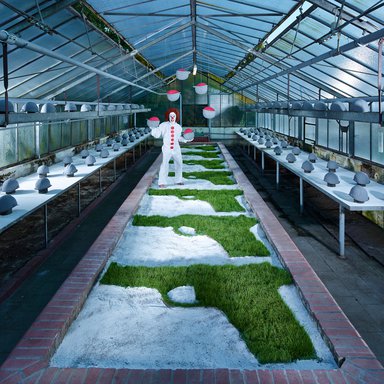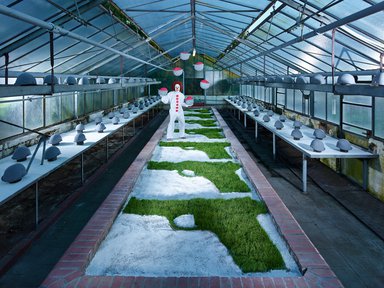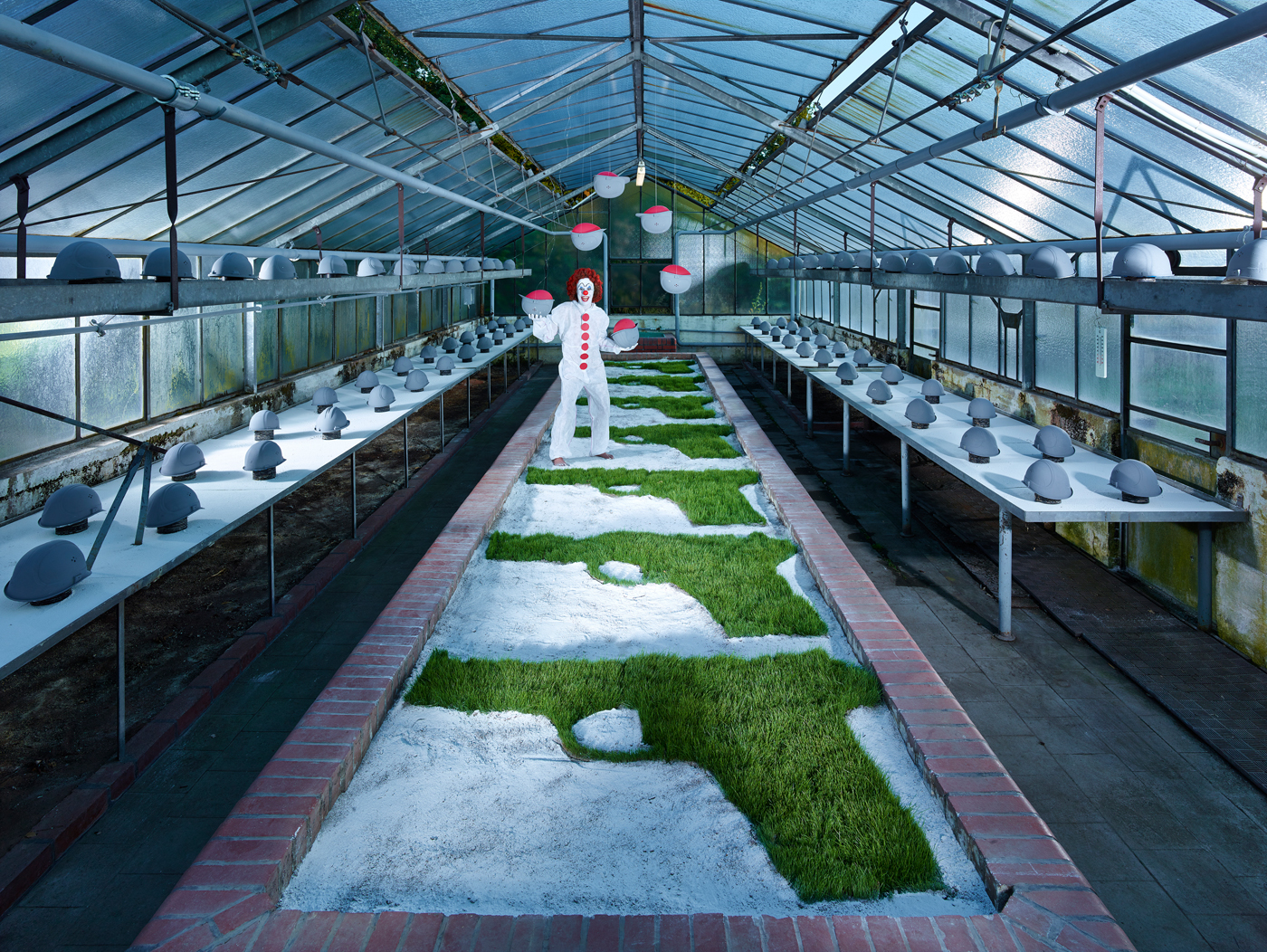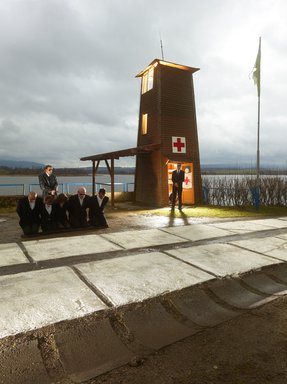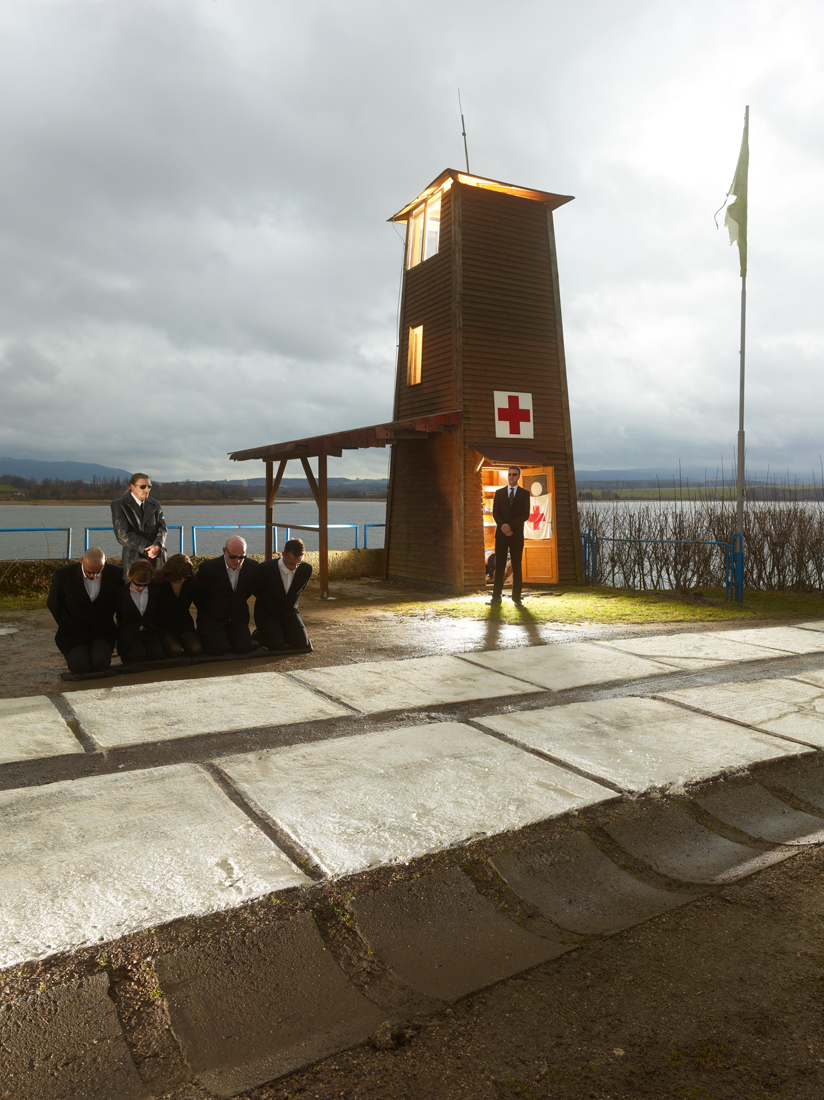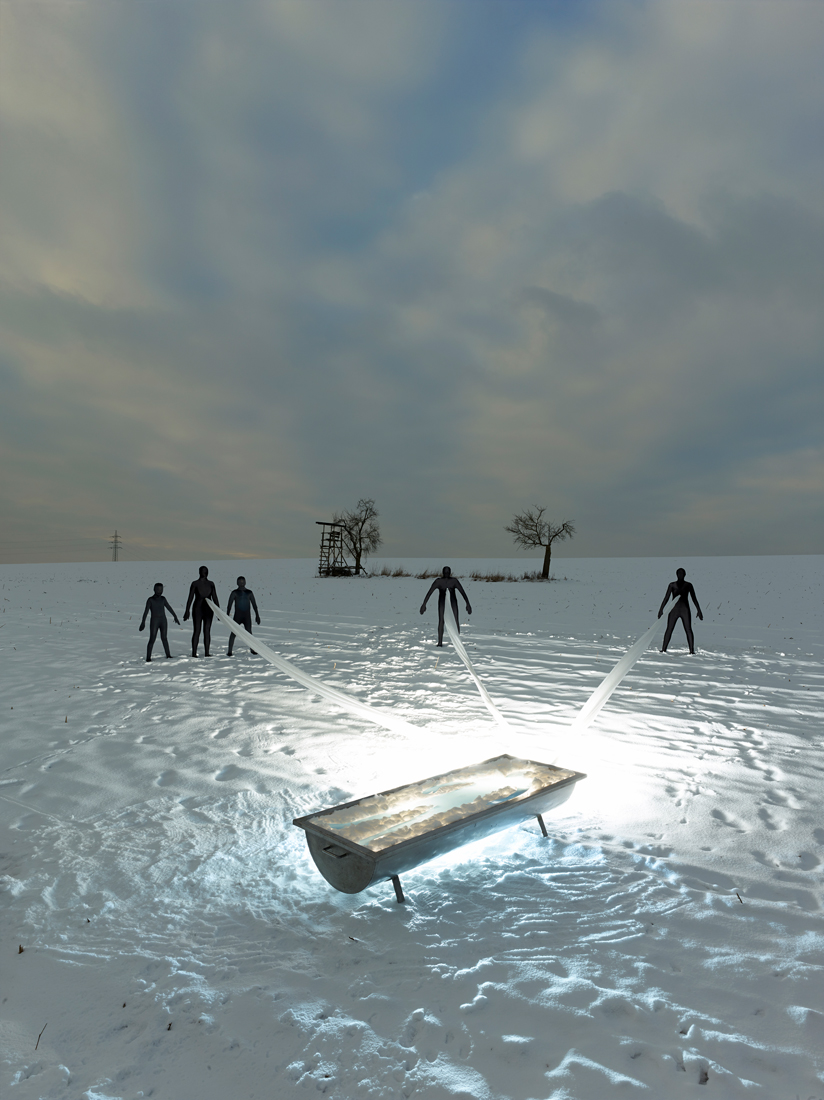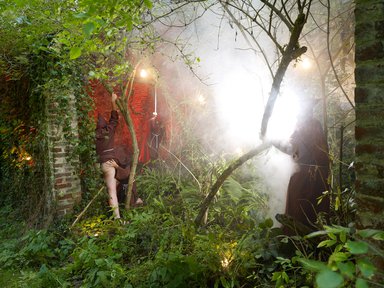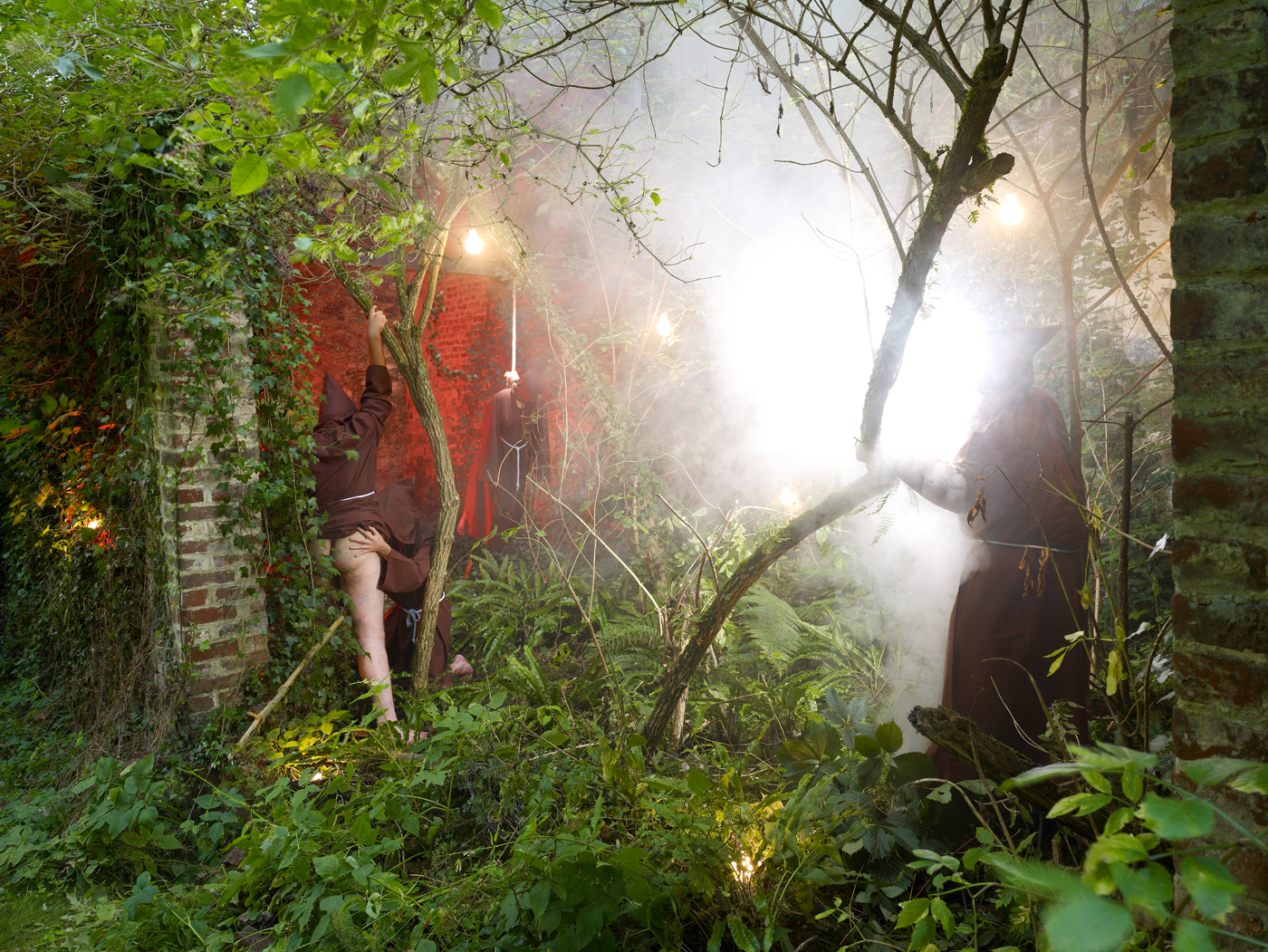Thomas Brenner | Letzte Inszenierung (2013)
The communication aim is to remember „dying“ and „death as a part of life “ into one's consciousness, using artistic processes, and to contribute these subjects to brake a taboo or to explore new ways how the complete process of life can be interpreted formatively. That's why a presentation is more exciting in public space and is a more expedient delivery of the project goal than an indoor exhibition.
A significant style-pedagogic element is the reversal of light and shade; from one viewpoint, where the photographic medium is an inherent basic principle, and from another viewpoint, where light and darkness are also closely aligned with the idea of life and death.
The formative realisation is based on background actors who operate in black bodysuits in the real world, combined with their own shade, which consists of light represented with shadow figures in backlit Plexiglas. These shadow figures illuminate the scene – therefore the dark shades become the source of light. As the second element of realisation, in-motion unsharpness is used, a visual sign of caducity and time change.
Because photography is inconceivable without light and time, this medium is predestined for this subject.
These scenes, with their variety of content aspects, are produced, lighted and deployed in nature and public places. No additional picture processing is done after the shooting. In addition to death as the natural end of life, the topics of suicide and genocide are also touched, and identified as a central theme - not unequivocally recognizable, but as a mental trigger provoked by these picture worlds.
